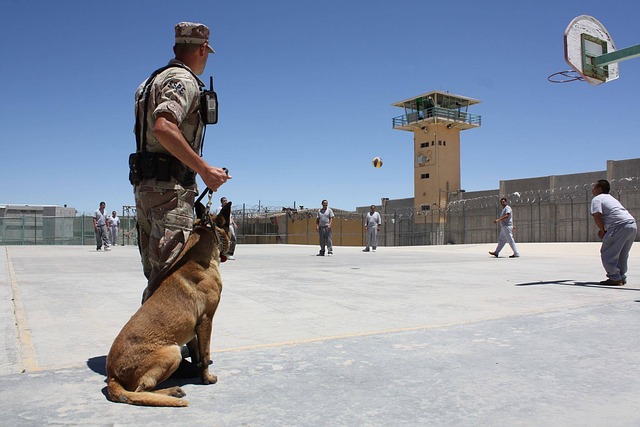Understanding high-risk teen reoffenders involves recognizing their complex blend of behaviors, including reckless driving, substance abuse, and dangerous peer associations, often rooted in early adverse experiences. Effective DUI management for this demographic requires identifying specific triggers like stressful life events or easy access to substances. Tailoring rehabilitation interventions to address these root causes increases long-term recovery chances and minimizes reoffending risks. Comprehensive programs combining education, counseling, structured support, positive peer influence, family involvement, and community engagement significantly reduce reoffending among high-risk teens. Technology, such as GPS tracking and digital platforms, is transforming rehab by offering personalized resources and monitoring, while addressing underlying issues and building supportive communities remains key to successful long-term outcomes for high-risk DUI offenders.
In a quest to break cycles of reoffending, teen rehabilitation programs are gaining critical importance. This article delves into the complex world of high-risk teen offenders, focusing on understanding and addressing behaviors that lead to recidivism, especially in relation to DUI management. We explore effective strategies for rehabilitation, highlighting the vital roles of family, schools, and communities. Furthermore, we discuss how technology can aid in monitoring and motivating teens while sharing inspiring stories of long-term success in overcoming challenges and achieving stability.
- Understanding High-Risk Teen Reoffenders: Identifying Risky Behaviors and Triggers
- DUI (Driving Under the Influence) Statistics among Teens: A Growing Concern
- Effective Rehabilitation Strategies for Teens at Risk
- Creating a Supportive Environment: Family, School, and Community Involvement
- Technology in Teen Rehabilitation: Digital Tools for Monitoring and Motivation
- Long-Term Success Stories: Overcoming Challenges and Achieving Stability
Understanding High-Risk Teen Reoffenders: Identifying Risky Behaviors and Triggers

Understanding high-risk teen reoffenders involves recognizing the unique combination of risky behaviors and triggers that contribute to their path of reincidivism. These individuals often exhibit a pattern of reckless driving, substance abuse, and association with dangerous peer groups. Early exposure to adverse experiences, such as family violence or neglect, can set the stage for these behaviors, creating a cycle of poor decision-making.
Identifying specific triggers is crucial for effective DUI management among high-risk reoffenders. Triggers may include stressful life events, access to substances, or even certain environments that stimulate past harmful behaviors. By pinpointing these triggers, rehabilitation programs can tailor interventions to address the underlying causes rather than merely treating symptoms. This personalized approach enhances the likelihood of successful long-term recovery and reduces the risk of reoffending.
DUI (Driving Under the Influence) Statistics among Teens: A Growing Concern

The issue of teens driving under the influence (DUI) is a growing concern within the realm of youth rehabilitation. Statistics paint a disturbing picture, revealing that adolescent drivers involved in DUI incidents are at a significantly higher risk of becoming high-risk reoffenders. This is particularly alarming given the potential for life-altering consequences, including severe injuries or fatalities both for the teen driver and others on the road.
According to recent data, teens with a history of DUI offenses exhibit elevated rates of repeat offending compared to their adult counterparts. Such patterns underscore the urgent need for comprehensive rehabilitation programs tailored to address the unique challenges faced by young individuals who find themselves in these high-risk situations. Effective management of DUI cases among teens requires a multifaceted approach that combines education, counseling, and structured support to foster positive behavior change and prevent reoffending.
Effective Rehabilitation Strategies for Teens at Risk

Rehabilitating teens at risk involves tailored strategies that address the unique challenges they face, such as peer pressure, impulsivity, and a developing brain. Effective programs incorporate education on decision-making, coping mechanisms, and skill-building workshops to empower young individuals with the tools needed to resist risky behaviors. One key area of focus is DUI management, given the elevated risks associated with underage drinking and driving.
Interventions should also foster positive peer influence and encourage participation in structured activities like sports or arts programs that offer a sense of belonging and purpose. Additionally, family involvement and aftercare services are vital to sustaining recovery. By combining these strategies, rehabilitation centers can significantly reduce the likelihood of reoffending among high-risk teens.
Creating a Supportive Environment: Family, School, and Community Involvement

Creating a supportive environment is pivotal for teen rehabilitation, especially for those at high risk of reoffending after a DUI. Family plays a crucial role in providing a stable home base and instilling positive values. Parental involvement in treatment programs can significantly enhance success rates by offering encouragement and reinforcing healthy behaviors outside the clinical setting. Schools also contribute by implementing support systems like guidance counseling, peer mentoring, and educational workshops focused on responsible decision-making and substance abuse prevention.
Community engagement is another essential component. Local support groups, aftercare programs, and recreational activities foster a sense of belonging and help teens avoid high-risk environments that could trigger a return to harmful behaviors. Collaborating with community leaders and organizations ensures teens have access to comprehensive resources tailored to their unique needs, thereby reducing the likelihood of reoffending and promoting successful rehabilitation.
Technology in Teen Rehabilitation: Digital Tools for Monitoring and Motivation

In today’s digital era, technology plays a pivotal role in teen rehabilitation programs, offering innovative solutions for monitoring and motivating high-risk reoffenders, especially those entangled in DUI management. Digital tools provide a sophisticated approach to keeping at-risk youth on track with their recovery journey. For instance, GPS tracking devices can monitor an individual’s location, ensuring they adhere to their treatment plan and court-mandated restrictions. This real-time data enables rehabilitation centers to quickly identify any deviations from the path of recovery, allowing for immediate intervention.
Moreover, digital platforms facilitate personalized therapy sessions, peer support groups, and educational resources accessible via smartphones or tablets. These tools not only make counseling more convenient but also foster a sense of community among peers who are navigating similar challenges. Gamification elements can be integrated into rehabilitation apps, turning recovery milestones into engaging quests that motivate teens to stay committed to their goals, thereby reducing the likelihood of reoffending and promoting successful long-term outcomes.
Long-Term Success Stories: Overcoming Challenges and Achieving Stability

In the journey towards teen rehabilitation, one of the most significant indicators of long-term success is how well individuals manage to avoid reoffending. For high-risk teens who have struggled with issues like DUI (Driving Under the Influence), overcoming these challenges is crucial for achieving stability and a brighter future. Many former high-risk reoffenders have turned their lives around, proving that with the right support systems and strategies, lasting change is achievable.
These success stories often involve tailored interventions, such as comprehensive counseling, job training, and mentorship programs. By addressing underlying issues, providing skill development opportunities, and fostering a sense of community, rehabilitation centers can help teens break free from cycles of criminal behavior. As they navigate adulthood with newfound coping mechanisms and a strong support network, the chances of successful reintegration into society and the reduction of recidivism rates significantly improve.
Teen rehabilitation programs, by focusing on identifying risky behaviors and triggers, implementing effective strategies, fostering supportive environments, leveraging technology for monitoring and motivation, and emphasizing long-term support, can significantly reduce recidivism rates among high-risk reoffenders. In particular, addressing DUI incidents early and providing comprehensive care can help teens make positive changes and avoid future legal troubles. With concerted efforts from families, schools, communities, and the integration of digital tools, we can ensure better outcomes for at-risk youth, ultimately breaking the cycle of reoffending.






